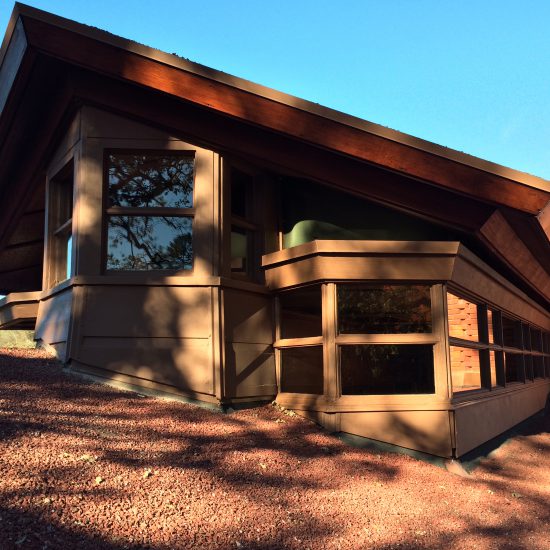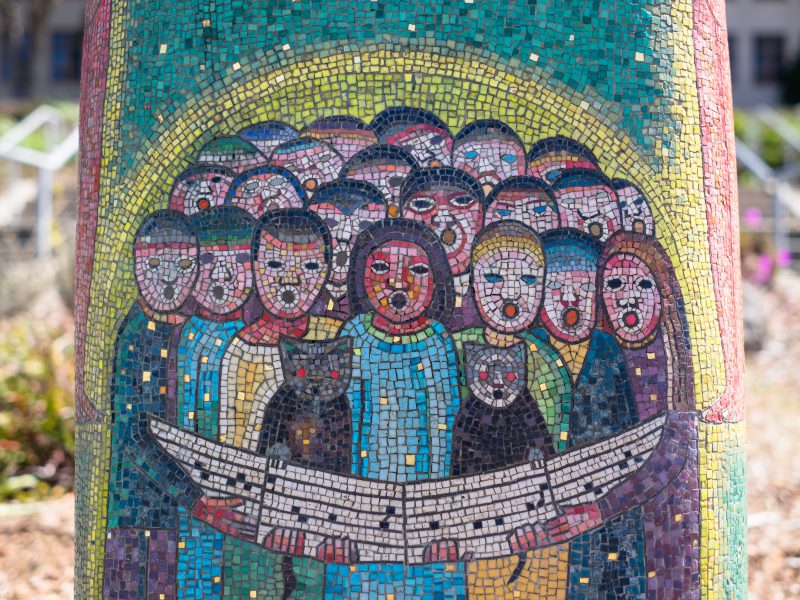Hanna House
Hanna House
Recognized as a National Historic Landmark, the Hanna House was Frank Lloyd Wright’s first work in the San Francisco region, and his first work with non-rectangular structures. The home was the first example of Wright’s “honeycomb” design and was based on 120-degree angles, with an open floor plan and rooms that flowed together, opening to expansive terraces and the outdoors.
The Hanna House was designed for Paul R. Hanna and his wife, Jean, both well known educators associated with Stanford University and the Hoover Institute. Construction began in 1937 with the main house, a one-story structure with a clerestory, constructed of native redwood, San Jose brick, cement, and plate glass. The house was remodeled by Wright in 1950 and 1957, expanding to include a guest house, hobby shop, storage building, double garage, carport, breezeway, and garden house with pools and a water cascade. The Hannas gave the house to the university in 1974. It was severely damaged in the 1989 Loma Prieta earthquake and underwent a major ten-year restoration that was completed in April 1999.
In July 2014, ARG/CS was retained to design and execute conservation treatments addressing deteriorating exterior wood and finishes on the main house’s clerestory. Prior to the commencement of treatments, paints and stains were matched to areas judged to be in good condition. Focusing on the east, west, and south elevations of the clerestory’s southern end, conservation work consisted of the removal of deteriorated finishes, repairs to wooden substrate, treatment of wood with a consolidant and epoxy (where necessary), and the application of the new, custom-matched finishes. Following the completion of treatments, ARG/CS provided the university with near- and long-term recommendations for maintaining the newly applied finishes.
Description:
Wood Conservation
Client:
Stanford University
Location:
Stanford, California
Category:
Finishes












